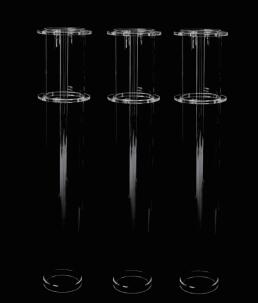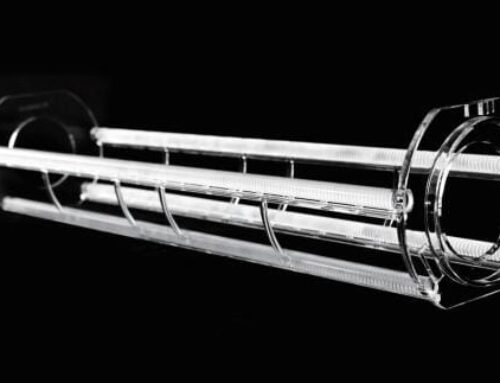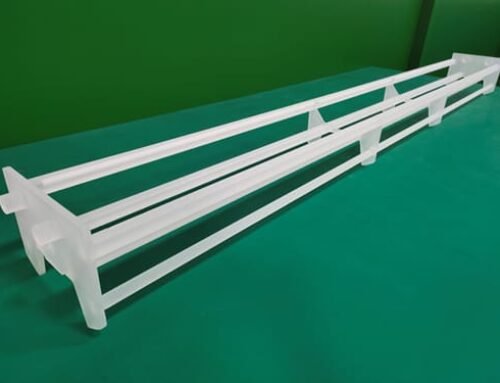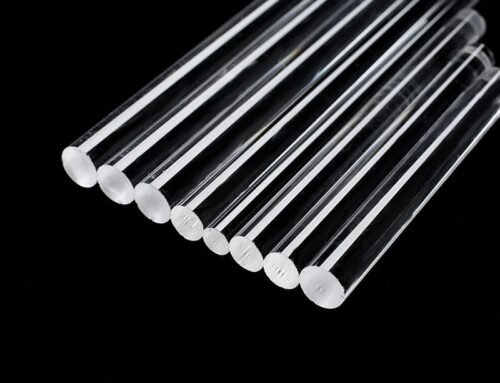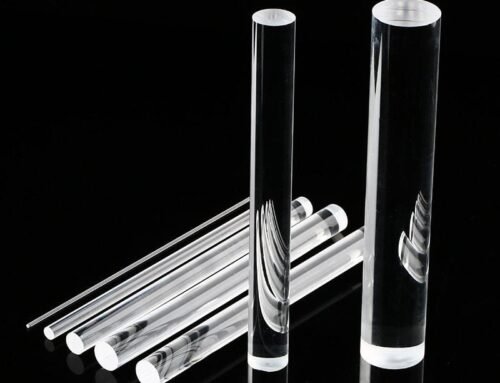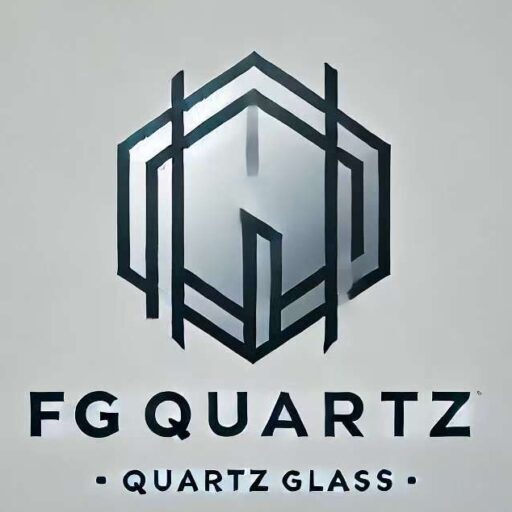Introduction to Quartz Glass
Quartz glass, also recognized as fused silica, is a highly versatile material characterized by its unique composition and remarkable properties. Composed primarily of silicon dioxide (SiO2), quartz glass is renowned for its exceptional purity, which contributes to its high performance in various applications. Its distinct structure is formed through the melting and cooling of naturally occurring quartz crystals, leading to a non-crystalline, amorphous solid. This unique manufacturing process ensures that quartz glass has minimal impurities, making it an ideal candidate for high-temperature environments.
One of the most significant advantages of quartz glass is its excellent thermal stability. It can withstand high temperatures, with a melting point exceeding 1,700 degrees Celsius. Such thermal resilience allows quartz glass to maintain its structural integrity and functionality in high-temperature furnaces, where other materials may fail. This property is particularly advantageous in industries like semiconductor manufacturing, metallurgy, and ceramics, where processes often involve extreme heat. Furthermore, quartz glass exhibits minimal thermal expansion, which reduces the risk of thermal shock and cracking during rapid temperature changes.
In addition to its thermal properties, quartz glass is also lauded for its exceptional optical transparency. This characteristic allows for optimal light transmission, making it suitable for applications that require clarity and precision. In high-temperature furnaces, the ability to observe processes through quartz glass can enhance monitoring and control, leading to improved efficiency and safety. Overall, the unique combination of thermal stability, low thermal expansion, and high optical clarity makes quartz glass a favored material in high-temperature applications, particularly in advanced industries that demand reliable performance in challenging environments.
Thermal Resistance and Stability
Quartz glass, renowned for its unique properties, exhibits exceptional thermal resistance that makes it a preferred choice for high-temperature furnace applications. One of the most important characteristics of quartz glass is its ability to withstand extreme temperatures, reaching upwards of 1,000 degrees Celsius without undergoing deformation or structural failure. This exceptional thermal stability is attributed to its high melting point and low thermal expansion coefficient, which minimizes the risk of cracking under intense heat.
The inherent strength of quartz glass not only allows it to endure elevated temperatures but also enables it to maintain its integrity in fluctuating thermal conditions. In high-temperature furnaces, rapid changes in temperature can create thermal stress; however, quartz glass’s excellent thermal shock resistance helps prevent damage, which is a common issue with less resilient materials. Consequently, this stability contributes to the longevity of quartz components used in furnace applications, reducing the frequency of repairs and replacements, which ultimately translates to cost savings for manufacturers and operators.
Furthermore, quartz glass is chemically inert, meaning it does not interact with the materials typically processed in high-temperature environments. This inertness enhances its performance in industrial applications, as it avoids the leaching of harmful substances or unwanted reactions that could compromise the quality of the processed materials. The thermal resistance and stability of quartz glass are evident in a variety of applications, including semiconductor manufacturing, glass and ceramic production, and metal processing, where durability under high heat is paramount. Overall, the unique properties of quartz glass make it an invaluable material in the realm of high-temperature furnace technology, further highlighting its advantages over alternative materials.
Chemical Corrosion Resistance
Quartz glass, renowned for its remarkable thermal and chemical stability, is an essential material in high-temperature furnace applications. One of the standout properties of quartz glass is its exceptional resistance to chemical corrosion. This resilience is primarily attributed to its high silica content, typically around 99.9%, which imparts a robust structure that can withstand interactions with various aggressive substances present in many industrial environments.
The inert nature of quartz glass ensures that it does not undergo significant chemical reactions when exposed to acids, bases, or other corrosive agents. This stability is particularly crucial in high-temperature furnaces where the combustion of materials may generate corrosive gases and liquids. Unlike many traditional materials that can degrade over time, quartz glass maintains its integrity, ensuring that it can function effectively without compromising the overall system’s reliability.
Moreover, quartz glass exhibits superior performance concerning thermal shock resistance compared to typical glass formulations. It can withstand sudden temperature fluctuations without cracking or deforming, further enhancing its longevity in furnace applications. When high-performance materials are required, quartz glass serves as a reliable option, as it minimizes the risk of failure due to corrosion.
Another aspect of its chemical resistance is its low thermal expansion coefficient, which contributes to its durability when subjected to temperatures that can exceed 1000 degrees Celsius. This characteristic ensures that quartz glass components remain tight-fitting and retain their shape, effectively preventing leaks or other failures that could arise from thermal stress or chemical attack.
Overall, the superior chemical corrosion resistance of quartz glass makes it an ideal choice for high-temperature furnace components, enabling manufacturers to ensure the longevity and efficiency of their systems while reducing the need for frequent maintenance and replacements.
High Purity and Low Contamination Risk
Quartz glass is renowned for its high purity and exceptional clarity, making it an ideal choice for high-temperature furnaces that require stringent material standards. The purity of quartz glass is significantly higher than that of conventional glass materials, creating a substantial advantage in industrial settings. This characteristic is critical, as any impurities present in the materials used during high-temperature processes can lead to contamination, negatively affecting the quality and performance of the final products.
The manufacturing process of quartz glass involves meticulous purification methods, which drastically reduce the presence of unwanted elements. By using silica sourced from high-grade quartz, manufacturers are able to create glass with exceptionally low levels of contaminants. This purity is crucial in various applications, including semiconductor fabrication and advanced ceramics production, where even trace amounts of impurities can lead to defects or suboptimal performance. Consequently, the use of quartz glass minimizes the risk of introducing particulate matter and chemical contaminants during high-temperature operations.
In addition to its low contamination risk, quartz glass also exhibits remarkable thermal stability. Its ability to withstand extreme temperatures without deforming further enhances its suitability for use in high-temperature furnaces. This quality ensures that the structural integrity of the quartz glass remains intact, preventing the release of impurities that may occur with other materials under similar conditions. Moreover, the high purity of quartz glass contributes to its durability and longevity in demanding industrial environments.
Ultimately, the integration of quartz glass in high-temperature applications serves to uphold the quality standards that industries strive for. By minimizing contamination risks through the use of high-purity materials, quartz glass supports optimal performance and efficiency, which are paramount in today’s competitive industrial landscape.
Thermal Expansion Characteristics
Quartz glass is widely recognized for its remarkable thermal expansion characteristics, which make it an ideal material for use in high-temperature furnaces. One of the most significant advantages of quartz glass is its low coefficient of thermal expansion. This property allows it to undergo minimal changes in size or shape when exposed to elevated temperatures. Such stability is crucial in high-temperature applications, particularly in circumstances where rapid temperature fluctuations are common.
In a high-temperature furnace, materials may experience extreme conditions that could lead to thermal shock, a phenomenon where the drastic change in temperature causes a material to crack or shatter. Traditional furnace materials often exhibit higher thermal expansion rates, making them more vulnerable to such damage. Conversely, the low thermal expansion of quartz glass significantly mitigates the risk of thermal shock, ensuring that the material can withstand the thermal stresses imposed during operation. This attribute not only enhances the durability of furnace components but also reduces the frequency and cost of potential replacements.
Moreover, the thermal expansion characteristics of quartz glass contribute to the overall efficiency of high-temperature furnaces. As the material maintains its shape and dimensions, the thermal stability ensures consistent heat distribution, allowing for uniform heating of materials within the furnace. This uniformity is essential for achieving desired heating outcomes and optimizing the performance of industrial processes. Therefore, the use of quartz glass in high-temperature furnaces offers enhanced reliability and operational efficiency, reinforcing its status as a preferred choice in the industry.
Versatility in Applications
Quartz glass has gained significant traction in various industries due to its remarkable characteristics, particularly in high-temperature furnace applications. Its ability to withstand extremes of both temperature and pressure makes it an ideal material in sectors such as metallurgy, ceramics, and semiconductor manufacturing. In metallurgy, quartz glass is frequently employed in induction melting and casting processes, where it serves as a vessel for molten metals, thanks to its excellent thermal stability. The material does not corrode under high temperatures, ensuring that it can handle the rigors of intense heat without compromising structural integrity.
In the ceramic industry, quartz glass is utilized for process operations that involve high-temperature firing. It is essential for kilns that require precise control of thermal conditions, as quartz glass helps minimize heat loss and provides uniform temperature distribution. This application is particularly useful in the production of high-performance ceramics, which demand stringent quality and consistency standards. Moreover, the clarity of quartz glass allows operators to monitor firing processes in real time, enabling immediate adjustments to enhance product quality.
The semiconductor industry also exploits the benefits of quartz glass, especially in the production of silicon wafers. In these applications, quartz glass components are used in equipment designed for processes such as doping and etching, where material purity and temperature resistance are critical. The inert nature of quartz ensures that it does not introduce contaminants during manufacturing, thus preserving the quality of the semiconductor components. As such, the integration of quartz glass into high-temperature furnaces across these diverse industries exemplifies its adaptability and efficiency, fulfilling varied operational needs while maintaining optimal performance.
Energy Efficiency Benefits
Quartz glass is increasingly recognized for its superior energy efficiency in high-temperature furnace applications. One of the primary reasons for this efficiency lies in its exceptional thermal stability and low thermal expansion coefficient. Unlike traditional materials, quartz glass can withstand extreme temperatures without deforming, thus ensuring that energy is used more effectively. By maintaining structural integrity at high temperatures, quartz glass reduces the need for frequent replacements, which translates to lower long-term operational costs.
Moreover, quartz glass exhibits high transparency to infrared radiation. This characteristic is particularly advantageous in high-temperature processes, where efficient heat transfer is essential. The ability of quartz to allow infrared radiation to pass through means that less energy is required to maintain the desired temperature level in a furnace. Consequently, this leads to significant reductions in energy consumption, benefiting both operational budgets and environmental considerations.
The implementation of quartz glass in high-temperature settings also contributes to improved insulation. Thanks to its inherent properties, quartz glass minimizes heat loss, allowing furnaces to operate at optimal efficiency. This not only aids in maintaining consistent temperature profiles but also reduces the overall energy expenditure needed to achieve these thermal conditions. As a result, organizations utilizing quartz glass can achieve a more sustainable operational model, lowering their carbon footprint while simultaneously reaping the benefits of reduced energy bills.
Additionally, the longevity of quartz glass further enhances its energy efficiency profile. By requiring less frequent replacement and maintenance, companies can allocate resources more effectively, ensuring that their high-temperature processes continue to run smoothly and economically. Therefore, the adoption of quartz glass technology is a strategic choice for addressing the challenges of energy consumption and sustainability in high-temperature furnace operations.
Comparison with Other Materials
In high-temperature applications, materials selected for furnace construction must withstand extreme conditions while offering durability and performance. Among the options, quartz glass predominates, presenting several advantages over other traditional materials such as ceramics, metal alloys, and even conventional glass.
When evaluating durability, quartz glass inherently possesses a high resistance to thermal shock, making it less prone to cracking under rapid temperature changes compared to ceramic materials. Ceramics, while having high-temperature stability, often suffer from brittleness and can fail if subjected to mechanical stress. Quartz glass, on the other hand, combines both strength and flexibility, allowing it to endure operational fluctuations without compromising its structural integrity.
In terms of performance, quartz glass exhibits superior optical clarity, which is particularly beneficial in applications where monitoring heat or observing processes within the furnace is essential. This clarity is generally lacking in metals and ceramics, which may obscure the view of the furnace interior, hampering operational efficiency. Furthermore, the excellent thermal conductivity of quartz glass facilitates efficient heat distribution, enhancing the overall performance of high-temperature furnaces.
Cost-effectiveness is another crucial factor when comparing materials. While initial procurement costs for quartz glass can be higher than some ceramics, its longevity and reduced maintenance requirements significantly lower the total cost of ownership over time. In contrast, metal alloys, although durable, may introduce additional costs related to corrosion resistance treatment and potential replacements due to wear.
In summary, when comparing quartz glass to other materials used in high-temperature furnaces, it stands out for its exceptional durability, superior performance, and long-term cost-effectiveness. This combination makes it a preferred choice for industries requiring reliable high-temperature operations. The advantages of quartz glass ensure that it is not only suitable but often superior in performance compared to alternatives.
Conclusion
In conclusion, the use of quartz glass in high-temperature furnaces presents numerous advantages that are essential for modern industrial applications. Its exceptional thermal resistance ensures safe operation in environments where temperatures can reach extreme levels. Unlike traditional materials, quartz glass boasts a high melting point, which enhances the longevity of furnace components, resulting in reduced maintenance costs and prolonged operational efficiency.
Moreover, quartz glass exhibits remarkable chemical durability, allowing it to withstand various corrosive substances often encountered in high-temperature processes. This resistance minimizes the risk of contamination and ensures the purity of the materials being processed. Consequently, industries can enhance product quality while adhering to stringent safety and performance standards.
Another significant benefit is the optical clarity offered by quartz glass. This property enables accurate monitoring and control of furnace processes, as operators can observe thermal dynamics without compromising safety. Enhanced visibility not only contributes to better decision-making but also supports more efficient energy usage, translating into reduced operational costs.
As the demand for more efficient and reliable materials increases, harnessing the properties of quartz glass becomes paramount for industries seeking to optimize their furnace operations. Its ability to withstand high temperatures and harsh environments makes it a critical component in various applications, from metal processing to glass manufacturing. Therefore, organizations should strongly consider integrating quartz glass into their high-temperature furnace systems to fully leverage its benefits and exemplify a commitment to cutting-edge industrial practices.
